This post was contributed by our friend, Rosalee de la Forêt
The long days of summer are almost upon us. In my neck of the woods that means hot days, cool nights, wildflowers galore, swimming and kayaking in lakes and rivers and joyous gatherings with friends.
Summer also means lots of sun!
Life on this earth wouldn’t exist without our brilliant and giant star. It brings us easily measurable gifts like light and warmth, while also giving us countless health benefits such as improved mood and Vitamin D synthesis.
Like anything, too much can be a bad thing. While there are many benefits to sunlight exposure, getting a sunburn has short term consequences (ouch!) and can also contribute to long term health problems ranging from premature aging of the skin to skin cancer.
Plant Allies
Plants that are high in phytonutrients are a strong ally for these sun-filled months. Many phytonutrients can decrease free-radical damage, strengthen skin cells and mediate UV damage. Often the most benefits are seen when we use them both externally and internally and for a long period of time.
These herbs don’t replace smart sun exposure such as limiting time in the full sun or wearing protective clothing, hats and/or sunscreen. Instead, think of these plants as powerful companions to maintaining vibrant and healthy skin.
The following five herbs are some of my favorite herbs for skin health, especially for protecting against UV damage.
5 Healing Herbs You Can Find in the Wild This Spring
F5 Herbs to Ease PMS (And Other Womanly Cycles)
6 Herbs to Help You Sleep (According to What’s Keeping You Awake)
1—Elderflowers
(Sambucus nigra, S. cerulea)
Maude Grieve, author of The Modern Herbal, writes that the English summer hasn’t started until the elderflowers bloom. These fragrant white blossoms are not only delicious but have also been used as medicine in a variety of ways from earaches to the flu.
Historically elderflowers were popular for the skin, especially facial serums, washes and creams. They were well known for both softening and rejuvenating the skin. I think it’s time for this bountiful plant to make a comeback in our herbal skin therapies!
In addition to supporting healthy skin, elderflowers have the potential to protect against UV damage. In vitro studies have shown that elderflowers are useful additions to cosmetic formulations because they “fulfill the official requirements for sunscreen products due to their broad spectrum of UV protection combined with their high photostability and remarkable antioxidant properties”.
2—Rosemary
(Rosmarinus officinalis)
Rosemary is famously called the herb of remembrance, with both historical and modern day stories and studies showing its ability to support cognitive function. Rosemary is also filled with antioxidants that have been shown to have many health benefits – including for the skin.
Rosemary extracts have been shown to be helpful against the sun’s UV damage. In one interesting study, researchers showed that taking an extract of rosemary and lemon internally decreased UV damage in humans. This study also showed the benefits of long term use. People taking these extracts saw good results after 8 weeks and even stronger results after 12 weeks.
3—St. John’s Wort
(Hypericin perforatum)
St. John’s Wort has long been associated with the sun. Depending on your climate, it may bloom around the summer solstice and those bright yellow blooms are reminiscent of little stars on earth. If you crush those yellow flowers between your fingers you’ll see a purplish-red substance left behind. This is part of St. John’s Wort’s starry magic!
Modern clinical trials have verified that a cream made from St. John’s Wort has the ability to protect the skin from the harmful effects of a sunburn. In one study, the UV-protective effect of the St. John’s Wort cream was tested on 20 volunteers in a randomized, double-blind, vehicle controlled study. The herbal cream was found to significantly reduce UVB-induced erythema as opposed to placebo.
While many herbalists rely on St. John’s Wort for skin protection, there have been some cases of increased photosensitivity. This seems most common when using isolated chemical extracts (like hypericin) rather than whole plant based products. It’s important to keep this in mind and to slowly test out your personal level of sensitivity.
4—Calendula
(Calendula officinalis)
If you twisted my arm to choose only one plant for the skin, I would have to go with calendula. Those bright orange and yellow blooms are filled with photo-protective qualities as well as many other virtues that support the skin. Calendula is a beautiful flower that is easy to grow in many climates, making this a prolific plant that you can easily source from your backyard or local farm.
Calendula can support already healthy skin, or aid skin that has been damaged. While calendula’s gifts are many, we know it promotes wound healing by stimulating proliferation and migration of fibroblasts. It is also mildly antimicrobial, helping to prevent infection.
There are so many ways to enjoy calendula! You can infuse it into oil for creams, body butters, salves or serums. You can also eat the fresh petals in salads and soups.
You can use calendula to maintain healthy skin and to improve elasticity and hydration. Calendula can also be used to promote skin health after the skin has been severely damaged. I like to use a combination of calendula and St. John’s Wort infused oil to nourish the skin after getting too much sun.
5—Cacao and Chocolate
(Theobroma cacao)
That’s right!
Eating cacao could support your skin and protect it from UV damage.
In a 24 week double blind placebo controlled study, women with moderate sun-damaged skin who were given high flavanol cacao drinks showed improved skin elasticity compared to those who were given a placebo. Another study concluded, “Dietary flavanols from cocoa contribute to endogenous photoprotection, improve dermal blood circulation, and affect cosmetically relevant skin surface and hydration variables.”
For best results I recommend eating chocolate with at least 85% cacao content or eating cacao nibs or cacao powder. To choose the best chocolate for your health as well as the planet look for fair trade and organic chocolate.
In addition to eating cacao and chocolate, using cacao butter externally leaves a lipid barrier on your skin, which helps to retain moisture and hydration for the skin. Cacao butter is the solid fat from a cacao pod that is often separated out in the manufacture of chocolates. It is often mixed with lighter oils in creams and balms.
Conclusion
Phytonutrient-rich plants are powerful allies for your skin. While I’ve listed some of my favorites, there are countless other plants that offer deep nourishment and potent protection for your skin. The more you immerse your life into the plant world, the more you’ll experience the many gifts found there!
These five herbs can be enjoyed both internally and externally to support your skin and protect it from UV damage. While these herbs are safe for most people, it’s always a good idea to consult with an herbalist or do your own research if you have special health considerations or sensitivities.
About the Author: Rosalee de la Forêt, RH, is passionate about helping people discover the world of herbalism and natural health. Her first book, Alchemy of Herbs: Transforming Everyday Ingredients into Foods and Remedies that Heal, was an instant bestseller. Visit her site, HerbsWithRosalee.com, to explore the world of herbs and to discover your own herbal constitution.
References
• Grieve, Maude. A Modern Herbal. Penguin, 1984.
• Jarzycka, Anna, Agnieszka Lewi.ska, Roman Gancarz, and Kazimiera A Wilk. “Assessment of Extracts of Helichrysum Arenarium, Crataegus Monogyna, Sambucus Nigra in Photoprotective UVA and UVB; Photostability in Cosmetic Emulsions.” Journal of photochemistry and photobiology. B, Biology 128 (2013): doi:10.1016/j.jphotobiol.2013.07.029.
• Pérez-Sánchez, A., et al. “Protective Effects of Citrus and Rosemary Extracts on UV-Induced Damage in Skin Cell Model and Human Volunteers.” Journal of Photochemistry and Photobiology B: Biology 136 (July 5, 2014): 12–18. doi:10.1016/j.jphotobiol.2014.04.007.
• Meinke, Martina C, Sabine Schanzer, Stefan F Haag, Federica Casetti, Marcel L Müller, Ute Wölfle, Anke Kleemann, Juergen Lademann, and Christoph M Schempp. “In Vivo Photoprotective and Anti-inflammatory Effect of Hyperforin Is Associated with High Antioxidant Activity in Vitro and Ex Vivo.” European Journal of Pharmaceutics and Biopharmaceutics: official journal of Arbeitsgemeinschaft für Pharmazeutische Verfahrenstechnik e.V 81, no. 2 (2012): doi:10.1016/j.ejpb.2012.03.002.
• Dinda, Manikarna, Uma Dasgupta, Namrata Singh, Debasish Bhattacharyya, and Parimal Karmakar. ” PI3KMediated Proliferation of Fibroblasts by Calendula Officinalis Tincture: Implication in Wound Healing .” Phytotherapy research : PTR 29, no. 4 (2015): doi:10.1002/ptr.5293.
• Efstratiou, Efstratios, Abdullah I Hussain, Poonam S Nigam, John E Moore, Muhammad A Ayub, and Juluri R Rao. “Antimicrobial Activity of Calendula Officinalis Petal Extracts Against Fungi, As Well As Gram-negative and Gram-positive Clinical Pathogens.” Complementary therapies in clinical practice 18, no. 3 (2012): doi:10.1016/j.ctcp.2012.02.003.
• Jadoon, Saima, Sabiha Karim, Muhammad Hassham Hassan Bin Asad, Muhammad Rouf Akram, Abida Kalsoom Khan, Arif Malik, Chunye Chen, and Ghulam Murtaza. “Anti-Aging Potential of Phytoextract Loaded- Pharmaceutical Creams for Human Skin Cell Longetivity.” Oxidative medicine and cellular longevity 2015 (2015): doi:10.1155/2015/709628.
• Yoon, Hyun-Sun, Jong Rhan Kim, Gyeong Yul Park, Jong-Eun Kim, Dong Hun Lee, Ki Won Lee, and Jin Ho Chung. “Cocoa Flavanol Supplementation Influences Skin Conditions of Photo-Aged Women: A 24-Week Double-Blind, Randomized, Controlled Trial.” The Journal of nutrition 146, no. 1 (2016): doi:10.3945/jn.115.217711.
• Heinrich, Ulrike, Karin Neukam, Hagen Tronnier, Helmut Sies, and Wilhelm Stahl. “Long-term Ingestion of High Flavanol Cocoa Provides Photoprotection Against UV-induced Erythema and Improves Skin Condition in Women.” The Journal of nutrition 136, no. 6 (2006): 1565-9.
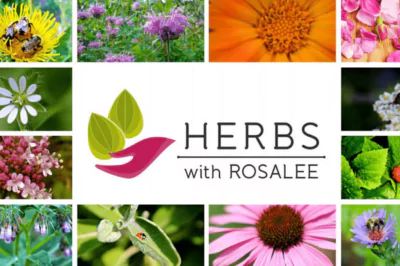


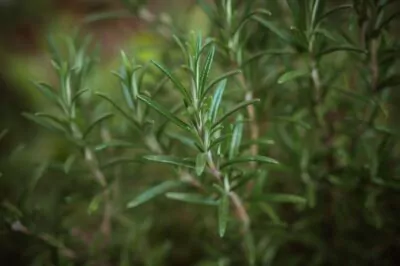

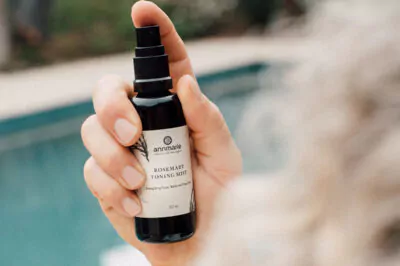
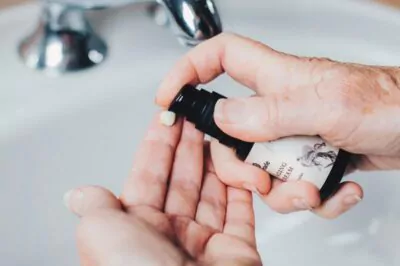
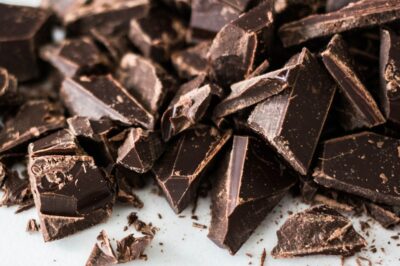
Which product will help with sun spots on my face?